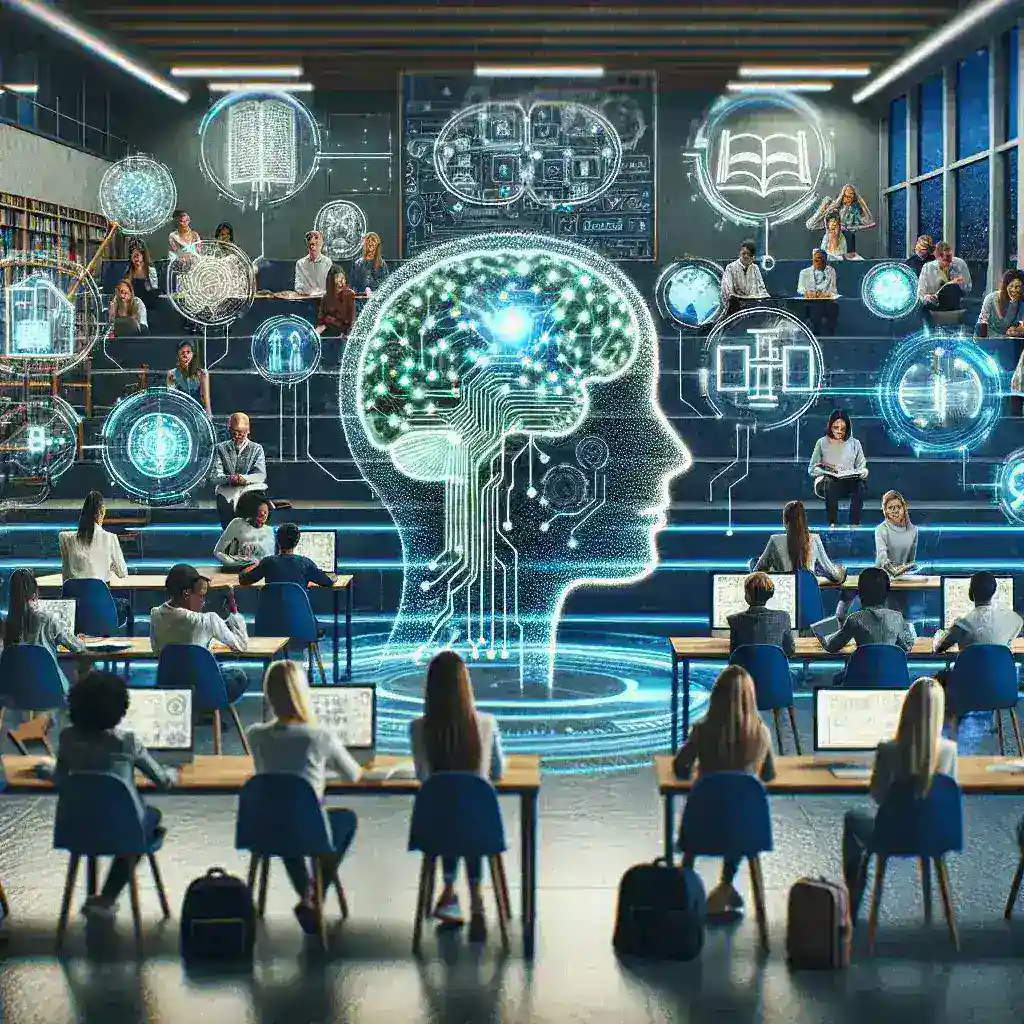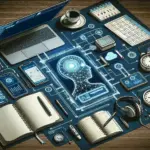The Dawn of AI-Powered Education
The landscape of education is undergoing a profound transformation as artificial intelligence (AI) emerges as a revolutionary force in learning environments worldwide. From personalized tutoring systems to intelligent assessment tools, AI is reshaping how students learn, teachers instruct, and educational institutions operate. This technological evolution represents more than just digital innovation; it embodies a fundamental shift toward more efficient, accessible, and individualized education.
As we stand at the crossroads of traditional pedagogy and cutting-edge technology, understanding the role of AI in education becomes crucial for educators, students, policymakers, and technology developers alike. The integration of artificial intelligence in educational settings promises to address long-standing challenges while creating new opportunities for enhanced learning experiences.
Understanding AI in Educational Contexts
Artificial intelligence in education encompasses a broad spectrum of technologies designed to simulate human intelligence and enhance learning processes. These systems can analyze vast amounts of educational data, recognize patterns in student behavior, and provide insights that were previously impossible to obtain through conventional methods.
Machine learning algorithms form the backbone of educational AI systems, enabling computers to learn from student interactions and improve their responses over time. Natural language processing allows AI systems to understand and generate human language, facilitating communication between students and intelligent tutoring systems. Computer vision technology enables AI to analyze visual content, making it possible to grade handwritten assignments or monitor student engagement through facial recognition.
The sophistication of these technologies has reached a point where AI can now perform complex educational tasks such as creating customized learning paths, providing real-time feedback, and even generating educational content tailored to specific learning objectives and student needs.
Personalized Learning: The Heart of AI Education
One of the most significant contributions of AI to education is the ability to deliver truly personalized learning experiences. Traditional classroom settings often follow a one-size-fits-all approach, which may not accommodate the diverse learning styles, paces, and preferences of individual students. AI changes this paradigm by creating adaptive learning environments that respond to each student’s unique characteristics.
Intelligent tutoring systems analyze student performance in real-time, identifying areas of strength and weakness. Based on this analysis, the system can adjust the difficulty level of questions, provide additional explanations for challenging concepts, or suggest alternative learning resources. This level of personalization ensures that students receive the right content at the right time, maximizing their learning potential.
For instance, if a student struggles with algebraic equations but excels in geometry, an AI-powered learning platform can provide additional practice problems and explanatory videos for algebra while allowing the student to progress more quickly through geometric concepts. This individualized approach helps maintain student motivation and prevents the frustration that often accompanies standardized learning approaches.
Intelligent Assessment and Feedback Systems
Traditional assessment methods often provide limited insights into student understanding and can be time-consuming for educators to evaluate. AI-powered assessment tools revolutionize this process by offering immediate, detailed feedback and comprehensive analytics on student performance.
Automated grading systems can evaluate not only multiple-choice questions but also complex written responses, mathematical solutions, and even creative assignments. These systems use natural language processing and machine learning algorithms to understand context, evaluate reasoning, and provide constructive feedback that helps students improve their work.
Furthermore, AI assessment tools can identify patterns in student errors, helping educators understand common misconceptions and adjust their teaching strategies accordingly. This data-driven approach to assessment enables more informed decision-making in curriculum design and instructional planning.
Virtual Teaching Assistants and Chatbots
The integration of AI-powered virtual assistants in educational environments has created new possibilities for student support and engagement. These intelligent systems can handle routine inquiries, provide 24/7 assistance, and offer personalized guidance to students outside of traditional classroom hours.
Educational chatbots can answer frequently asked questions about course content, assignment deadlines, and administrative procedures, freeing up human educators to focus on more complex instructional tasks. Advanced virtual teaching assistants can even engage in sophisticated conversations about course material, helping students work through problems and understand difficult concepts.
The availability of constant support through AI assistants is particularly beneficial for distance learning and online education, where students may not have immediate access to human instructors. These systems ensure that learning continues beyond the physical or virtual classroom, creating a more comprehensive educational experience.
Content Creation and Curriculum Development
AI technologies are increasingly being used to create educational content and assist in curriculum development. Machine learning algorithms can analyze educational standards, learning objectives, and student performance data to generate appropriate learning materials, including practice questions, explanatory texts, and interactive exercises.
This capability is particularly valuable for educators who need to create large volumes of content or adapt existing materials for different learning levels. AI can also help identify gaps in curriculum coverage and suggest improvements based on student performance data and educational research.
Additionally, AI-powered content creation tools can produce materials in multiple languages and formats, making education more accessible to diverse student populations and accommodating various learning disabilities and preferences.
Challenges and Considerations
Despite the tremendous potential of AI in education, several challenges must be addressed to ensure successful implementation. Privacy and data security concerns are paramount, as educational AI systems collect and analyze vast amounts of sensitive student information. Protecting this data from unauthorized access and ensuring compliance with educational privacy regulations is crucial.
The digital divide represents another significant challenge, as not all students have equal access to the technology required for AI-enhanced learning. This disparity could potentially exacerbate existing educational inequalities if not properly addressed through inclusive technology policies and infrastructure development.
Teacher training and adaptation also present challenges, as educators must develop new skills to effectively integrate AI tools into their teaching practices. Professional development programs and ongoing support are essential to help teachers navigate this technological transition successfully.
Ethical Implications and Bias Concerns
The use of AI in education raises important ethical questions about algorithmic bias, transparency, and the role of human judgment in educational decision-making. AI systems can inadvertently perpetuate or amplify existing biases present in training data, potentially leading to unfair treatment of certain student groups.
Ensuring algorithmic fairness requires careful attention to data collection, model training, and ongoing monitoring of AI system outputs. Educational institutions must establish clear guidelines for AI use and maintain human oversight of critical educational decisions.
Transparency in AI decision-making is also crucial, as students, parents, and educators need to understand how AI systems arrive at their recommendations and assessments. This transparency builds trust and enables stakeholders to make informed decisions about AI integration in educational settings.
Global Implementation and Case Studies
Around the world, educational institutions are experimenting with various AI applications, providing valuable insights into best practices and potential pitfalls. In China, AI-powered systems are being used to monitor student attention levels and provide real-time feedback to teachers about classroom engagement. Finland has implemented AI tutoring systems that adapt to individual learning styles and provide personalized instruction in mathematics and science.
Universities in the United States are using AI to predict student success and identify at-risk learners early in their academic careers, enabling targeted interventions that improve retention rates. These global examples demonstrate the versatility of AI applications in education and the importance of cultural and contextual considerations in implementation.
Future Trends and Innovations
The future of AI in education promises even more sophisticated applications and capabilities. Augmented and virtual reality combined with AI will create immersive learning experiences that transport students to historical events, molecular structures, or distant planets. Emotional AI will enable systems to recognize and respond to student emotions, providing support for mental health and well-being alongside academic achievement.
Predictive analytics will become more sophisticated, allowing educational systems to anticipate learning difficulties before they occur and proactively adjust instruction to prevent academic struggles. Brain-computer interfaces may eventually enable direct knowledge transfer and enhanced cognitive abilities, though such technologies remain largely theoretical at present.
Preparing for the AI-Enhanced Classroom
As AI continues to evolve and integrate into educational systems, stakeholders must prepare for this transformation thoughtfully and strategically. This preparation involves developing digital literacy skills, establishing ethical guidelines, and creating supportive infrastructure for AI implementation.
Educational policymakers must work to ensure equitable access to AI-enhanced learning opportunities while protecting student privacy and maintaining educational quality standards. Teachers need ongoing professional development to effectively leverage AI tools and maintain their essential role as human mentors and guides in the learning process.
Conclusion: Embracing the AI Revolution in Education
The integration of artificial intelligence in education and learning represents a paradigm shift that holds immense promise for improving educational outcomes, increasing accessibility, and personalizing learning experiences. While challenges exist, the potential benefits of AI in education far outweigh the risks when implemented thoughtfully and ethically.
Success in this AI-enhanced educational future requires collaboration between technologists, educators, policymakers, and students themselves. By working together to address challenges and maximize opportunities, we can create an educational ecosystem that harnesses the power of artificial intelligence to unlock human potential and prepare learners for success in an increasingly digital world.
The journey toward AI-integrated education is ongoing, and its ultimate success will depend on our collective commitment to using these powerful technologies in service of learning, growth, and human development. As we continue to explore and refine AI applications in education, we move closer to realizing the vision of truly personalized, effective, and accessible education for all learners.




Leave a Reply